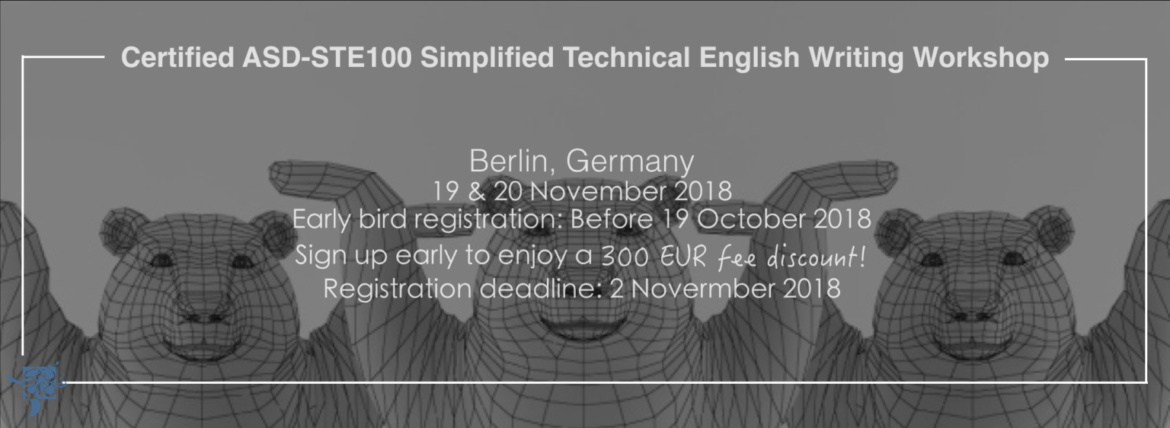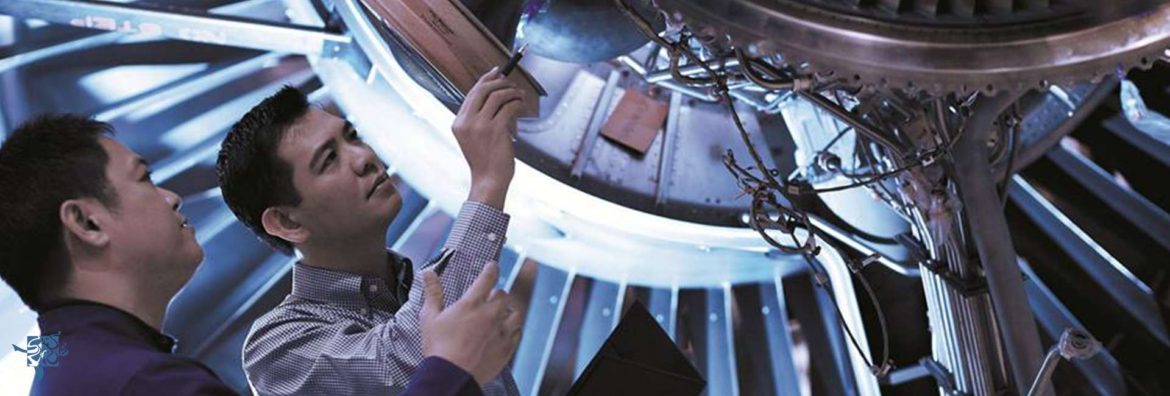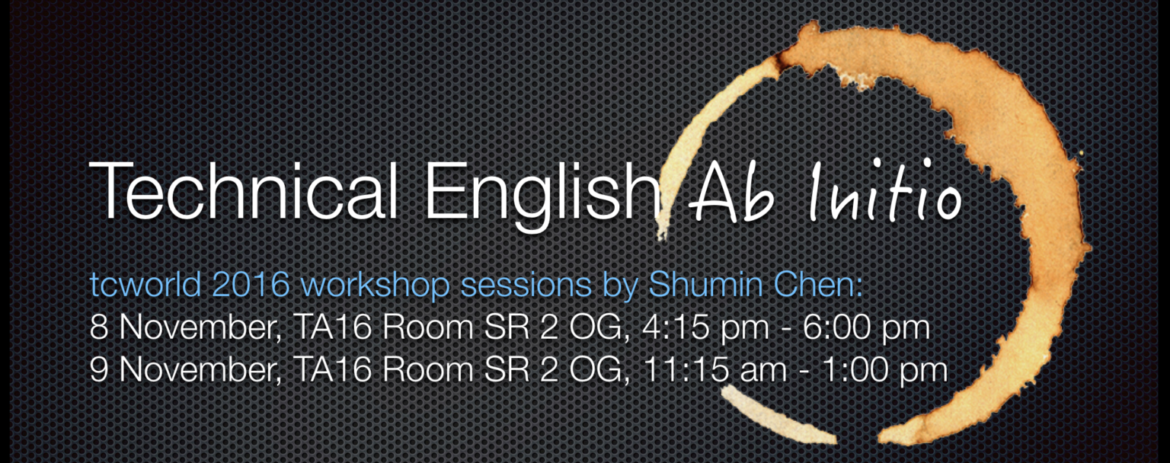by Shufrans Techdocs
in News & Events
Comments Off on Join a certified ASD-STE100 Simplified Technical English training workshop in Auckland, New Zealand
Quick facts
Dates: 19 – 20 April 2017
Location: Auckland, New Zealand
Length of training: 2 days
Fee: 1,850 NZD
Early bird registration: Before 28 March 2017
Sign up early to enjoy a 20% training discount
Deadline for registration: 10 April 2017
Summary
Simplified Technical English (STE) stresses on the use of unambiguous terminology where one word only has one meaning. This reduces the likelihood of using synonymous terms that can result in confusion. Optimum re-usability of technical terms on the word, phrase, and sentence levels is to be expected. This will greatly improve any product life-cycle management process.
Technical documentation that is written in STE becomes easier for non-native speakers of the English language to understand. The resulting text is much easier to translate which is especially relevant when machine translation is part of your localization strategy. Preparing your technical content with ASD-STE100 ensures quality at the source and prepares you for future-proof translation processes.
Said Ms Shumin Chen, principal ASD-STE100 trainer: “The benefits of implementing and writing in Simplified Technical English (STE) are manifold – audience engagement through high-quality content, improved product safety, lower life cycle cost and reduced logistics footprint!”
“The ASD-STE100 course I attended by Shumin was very intensive yet enjoyable. Besides the standard format and company templates used when creating documentation, STE rules helped me understand that there is an alternative approach to technical writing. Top Qualities: Effective, versatile, high-quality training delivery.” Manufacturing Engineer, FNSS Defence Systems
Course outline*
- Practical overview of ASD-STE100 Simplified Technical English
- How STE helps both native & non-native speakers of English
- Writing rules and how to apply them in practice
- How to use the general vocabulary
- How to deal with industry-specific terminology
- How to use STE for various documentation types
- How to implement STE with minimal disruption to on-going production and existing documentation
- Hands-on STE editing and review
Who should attend?
- Compliance managers
- CIO, COO, CTO
- Customer support managers
- Documentation managers
- Editors
- Engineering managers
- Engineers and SMEs who create documentation
- ILS managers
- Maintenance managers
- MRO personnel
- Operation managers
- Product managers
- Project managers
- Quality managers
- Technical writers
- Translation managers
- Translators
What training outcomes to expect?
Ms. Shumin Chen will teach participants how to correctly and effectively use STE in practice. She will also address some of the mistakes commonly found in technical writing and the frequently incorrect use of common STE writing rules.
Our interactive training, exercises and workshop let participants standardise content to:
- Author more efficiently
- Communicate more effectively with a global audience
- Improve operational safety
- Reduce AOG / downtime
- Facilitate modular writing and reuse
- Facilitate teamwork
- Facilitate translation
- Maximise consistency
- Optimise product lifecycle support
- Reduce the cost of creating and maintaining technical publications
Trainer’s qualifications
Ms. Shumin Chen, principal trainer & consultant at Shufrans TechDocs received her professional on-the-job training in the field of STE under the tutelage of Dr Frans Wijma, a linguist and documentation expert. Together as an experienced global team, they provided their combined knowledge and dedication to benefit customers worldwide. To date, they have provided training and consultancy services to over 180 companies. Shufrans TechDocs is the only company with such vast experience in providing certified STE training.
Shumin has supported various companies with their STE and other documentation needs, based on standards where possible. Although STE was developed for the aerospace industry, more specifically for aircraft maintenance documentation, Shumin found that it made a lot of sense to apply the same principles to other industries and types of documents as well. Few -if any- changes to the specification are necessary to adapt STE to industries ranging from machinery to IT, automotive to medical equipment.
* Shufrans also offers customised ASD-STE100 training solutions tailored to meet your specific requirements. These courses are normally provided at the customer’s premises.
by Shumin Chen
in Blog
Comments Off on Different industries, one technical language?
Given the success of Simplified Technical English (STE) and its adaptability, it was over time applied to various document types, and increasingly also in other (mainly technical) industries. In the aerospace and defence industries, safety, efficiency and readability are the main considerations for the use of STE. In many other industries, such as machinery, automotive, electronics, IT and medical equipment, another important consideration is to save on translation cost without compromising on translation quality.
Simplified Technical English (STE) rules describe sound writing practices
STE is an aerospace standard, or at least it started off as an aerospace standard. That having been said, out of those 65 writing rules, I couldn’t name a single one that is aerospace-specific. Take these STE rules for example:
- Do not make long sentences (maximum 20 words for procedures, 25 words for descriptive text).
- Do not use clusters of more than 3 nouns.
- Only use simple verb tenses.
- When you give an instruction, use the imperative/command form of the verb.
Well, most of us will have seen this kind of rules. We don’t like long sentences and Simplified Technical English tells us that for procedures or tasks there should be no more than 20 words in one sentence. For descriptive text we are allowed some more flexibility, and we need that, we have up to 25 words. Also English is a rather problematic language in that it allows us to just put any number of nouns into a cluster, and this makes it very difficult at times to see the relationship between the nouns in those clusters. For example ‘left engine switch’ can already be confusing, and difficult to understand, difficult to accurately translate.
If I say ‘left engine switch’, does that mean it is the switch for the left engine, or is it the left switch for a specific engine? So, do ‘left’ and ‘switch’ or ‘left’ and ‘engine’ belong together most directly?
In this case, the use of prepositions such as ‘of’, or ‘for’ will help to clarify this. Take the example of the ‘runway light connection resistance calibration‘. While it is common to see noun clusters made from several words in technical language, clusters that are too long will mean that your reader has to make his way through four modifying words to reach the main noun.
For technical writing professionals who are considering the option of implementing Simplified Technical English (STE) in their organisation, you now see that many of the STE writing principles are very valid for all technical documentation purposes.
One STE rule that can transform your technical writing skills
One valuable STE rule is the rule that I would consider the most important one: Only use approved words. This is where Simplified Technical English becomes really different from corporate style guides. Why? Because the STE language standard includes a core vocabulary (or general dictionary) of around 930 words that will let you write just about everything that you need for technical documentation, even for procedural information in general.
We find that roughly 95% of the words in the STE general dictionary can be easily adapted even for general banking, like financial aspects of banking information. The set-up of the STE standard is such that you can very easily adapt the STE to suit and cover your specific needs. It mainly entails additions to the dictionary which are customarily made, even for aerospace customers. Because even within aerospace, there is a lot of variation when it comes to vocabulary, terminology, especially when dealing with different systems on board an aircraft.

As a very simple example, one of our customers actually makes coffee machines. Now coffee machines seem to have nothing to do with aircraft. However, I think 98% of passenger aircraft actually have coffee machines on board, and they need their documentation in Simplified Technical English.
Now if this coffee machine happens to be in an office, or in a medical practitioner’s practice, or in a cafeteria, would it really require documentation that is all that different from the documentation on board an aircraft? No.. If anything at all, we just restrict the rules a little bit less. Aerospace tends to be a little bit more restrictive, we just relax the rules a little bit for other industries.
Copyright © 2016 Shufrans TechDocs. All rights reserved. No part of this article may be reproduced or transmitted in any form or by any means whatsoever without express written permission from the author, except in the case of brief quotations embodied in critical articles and reviews.
Are you ready to make STE your strategic partner?
Attend a 2-day certified ASD-STE100 workshop at any of our worldwide locations
by Shufrans Techdocs
in Blog
Comments Off on Standardisation as a cost reduction strategy
Why standardise?
Standardisation is widely practised in manufacturing to realise economy of scale at the product level. Why not apply standardisation to documentation?
Data standardisation is cost saving by common sense. Injuries, losses and costly legal liabilities can occur as a result of unclear documentation and ambiguous translations. Just like the manufacturing industry makes use of standard components in their product assembly line, Simplified Technical English uses standard vocabulary in the ASD-STE100 specification and consistent industry-/product specific terminology to create documentation.
The borrowed concept of standardisation in the engineering world when translated into the technical documentation industry is based on standardised terminology and simple grammar rules.
The latter for instance, promotes the use of the active voice and simple present tense to clearly identify the doer of a particular action so as to avoid miscommunication and ambiguous translations during the localisation process. In a nutshell, we can draw a parallel between grammar rules and SOPs that both share a common purpose in streamlining processes in a straightforward and objective manner.
What is STE, and how does STE differ from Standard English and how do I know if this is right for my industry?
ASD-STE100 Simplified Technical English (STE) is an international standard that helps to make technical documentation easy to understand. Simplified Technical English standardises vocabulary, grammar and style, while letting users control their specific terminology. Although Simplified Technical English originates from the aerospace and defence industries, it can easily be customised and applied to any other industry, including machinery, automotive, electronics, IT and medical equipment. Major manufacturers and the S1000D standard require the use of ASD-STE100 Simplified Technical English.
Simplified Technical English pays for itself
Our customer is a manufacturer of mobile X-ray based imaging solutions. They created an operator manual and a service manual in Standard English. This manual is to be translated into 7 other languages.
Before using Simplified English, the manuals had a total word count of 67,300 words. The number of pages was 454. In Simplified English, the word count came down to 49,600 words. The page count was reduced to 406.

Text in Simplified Technical English is easier to understand and may not even require translation. Where translation is needed, Simplified Technical English helps to drastically reduce translation cost and time-to-market, as it effectively eliminates redundant words and improves consistency.
The company thus saves almost EUR 21,000 or 35% on the translation of these manuals. For subsequent manuals, the savings would increase further thanks to better re-use and yield from translation memory.
With the ever increasing number of languages that companies need to deal with, these savings add up quickly. As content in Simplified Technical English is easier to validate, technical writers will be more productive, and fewer iterations and less rework will be required.
For this reason, the time-to-market is reduced by a similar percentage.
Editorial note: Based on feedback from readers, we would like to clarify that the cost reduction above is based on statistics from standard commercial memory tools, i.e. re-use on the sentence (segment level). This is brought by a combination of consistent style, vocabulary and terminology.
Copyright © 2016 Shufrans TechDocs. All rights reserved. No part of this article may be reproduced or transmitted in any form or by any means whatsoever without express written permission from the author, except in the case of brief quotations embodied in critical articles and reviews.
Are you ready to make STE your strategic partner?
Explore our FAQ section below.











